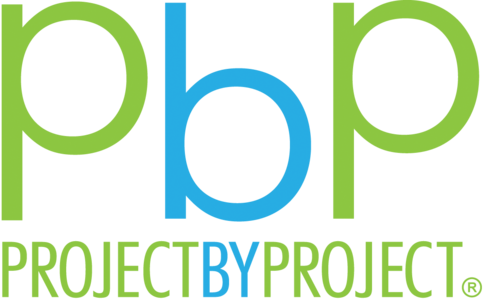Announcing Our 2023 Theme: Education Access 📚
As Project by Project moves into its 26th year of developing nonprofit leaders, we continue to create spaces where professionals can contribute to their communities in a supportive environment. Over the past two decades, PbP has focused on a collective of social issues from Domestic Violence to Healthcare to Civic Empowerment and more. We have worked with many different New York City organizations over the years to provide transformative resources to communities, enabling them to succeed in an ever-changing landscape.
Launching a new campaign is an exciting time for any organization, and so we are excited to present our 2023 theme: Education Access. PbP has not worked on an education-based theme for over a decade, and we felt that 2023 was the perfect time to revisit it. The AAPI community makes up about 16.2% of NYC students, representing over 40 ethnicities, tens of languages and religions, and many different cultures and immigration experiences. Bengali, Chinese, Korean, and Urdu are four of the top ten languages spoken in the city.
We’re seeing a return to in-person learning and its limitations, and also a push for more representation in school curriculum—the acknowledgment that Asian American history is American history. We want to highlight both our past and also the present issues that AAPI communities face in education today.
Education access allows individuals, families, and communities to grow and excel, but there are still many barriers particularly for the AAPI community, including:
Language Differences
Language is a formidable barrier impacting access to a range of vital services, such as healthcare, social services, housing, courts, and of course, education. 1 in every 3 Asian Americans in the U.S. are limited-English proficient, and there is often a lack of available English classes. 42% of APA households are linguistically isolated, meaning that no one in the household over the age of 14 speaks English well or at all. This can lead to them missing out on important conversations in the community and a lack of representation in politics, meaning that they are not allocated the resources they need simply because they don’t know how to ask for them.
Disparities Within the Diaspora
Asian Americans are often regarded as a monolith, but the AAPI community is extremely diverse. Since 2002, the United States government has defined “Asian American” as “persons having origins in any of the original peoples of the Far East, Southeast Asia, or the Indian subcontinent.” But like the term “Hispanic,” it was a catchall term intended to make Census classification easier, and does not take into account multiracial or generational identity, and does not represent a diverse set of experiences under the AAPI umbrella.
Each ethnicity faces its own unique problems. There are disparities in pay—Taiwanese and Indian women make a median of about $70,000 for full-time, year-round work, while Cambodian, Hmong, Samoan, Nepali, and Burmese women make a median of less than $35,000—because AAPI women are economically polarized, meaning they are overrepresented in both high- and low-wage occupations.
The “Model Minority Myth”
Asian Americans are the most highly educated demographic in the United States, meaning that more Asian Americans hold bachelor’s degrees (54%) than any other group in America (36% whites, 23% Blacks, 16% Latinos), which has led to the creation of the “model minority myth.”
From Learning for Justice:
The myth of the model minority is based in stereotypes. It perpetuates a narrative in which Asian American children are whiz kids or musical geniuses. Within the myth of the model minority, Tiger Moms force children to work harder and be better than everyone else, while nerdy, effeminate dads hold prestigious—but not leadership—positions in STEM industries like medicine and accounting. This myth characterizes Asian Americans as a polite, law-abiding group who have achieved a higher level of success than the general population through some combination of innate talent and pull-yourselves-up-by-your-bootstraps immigrant striving.
The model minority myth means that AAPI students have a complicated relationship with and are often excluded from affirmative action policies: one poll showed that 65% of AAPIs said that colleges shouldn’t consider race in admission, but 66% agreed that programs designed to increase racial diversity on campus are a good thing. The idea of affirmative action was established during the civil rights movement under the Kennedy administration to remedy racial injustice, but it only increases representation and does not fix structural issues in higher education.
The model minority myth is also born out of white supremacist ideology—it creates a hierarchy of minorities and is frequently used as a tool of anti-Blackness, facilitating competition among minority groups while simultaneously oppressing Asian Americans by erasing differences between subgroups of the AAPI community and discounting their struggles.
Education plays a critical role transforming lives for the better and to address these issues, PbP is dedicated to ensuring that everyone has access to quality education. This year, our Steering Committee is collaborating with organizations that can provide insight on ways to support struggling communities through financial relief, educational literacy, and providing support for groups facing discrimination. We want to help build an inclusive environment to provide the best opportunities for the next generation of children.





